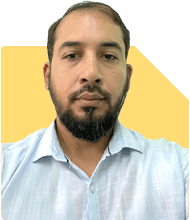Ramalingam Kalirajan |4253 Answers |Ask -Follow
Mutual Funds, Financial Planning Expert - Answered on Jul 02, 2024
He has an MBA in finance from the University of Madras and is a certified financial planner.
He is the director and chief financial planner at Holistic Investment, a Chennai-based firm that offers financial planning and wealth management advice.... more

Hello I am a private professional in an IT firm. I have 2 kids elder son is 3 years old and another is one year old. My fixed income is 13 lacks per annum. I have invested in smart kid policy for kids for 20 years at a value of 5k per month for 10 years. And I also have a FD of 20 lacs. Balance 17 lacs I am maintaining as emergency fund. please advise for TDS savings and when and how to plan a safe retirement in 50s
Understanding Your Current Financial Situation
You have a stable income and a good start with your investments. Here’s a summary:
Annual Income: Rs 13 lakhs
Smart Kid Policy: Rs 5,000 per month for 10 years
Fixed Deposit (FD): Rs 20 lakhs
Emergency Fund: Rs 17 lakhs
Goals and Priorities
Tax Savings: Maximize tax deductions and minimize TDS.
Children’s Education: Secure funds for your children’s future education.
Retirement Planning: Plan for a safe retirement in your 50s.
Tax Saving Strategies
Section 80C: You can claim up to Rs 1.5 lakhs per annum for investments in instruments like PPF, ELSS, and life insurance.
Public Provident Fund (PPF): PPF is a great option for tax savings and long-term investment. It provides tax-free returns and is a safe investment.
Equity-Linked Savings Scheme (ELSS): ELSS funds offer tax benefits under Section 80C and have the potential for high returns. However, they come with a lock-in period of three years.
National Pension System (NPS): Contributions to NPS are eligible for tax deduction under Section 80CCD(1B), up to Rs 50,000. It also offers additional tax benefits under Section 80C.
Health Insurance: Premiums paid for health insurance are deductible under Section 80D. You can claim up to Rs 25,000 for yourself, spouse, and children, and an additional Rs 25,000 for parents.
Home Loan Interest: If you have a home loan, the interest paid is deductible under Section 24 up to Rs 2 lakhs.
Tax-Free Bonds: Investments in tax-free bonds can provide tax-free income, reducing your tax liability.
Planning for Children’s Education
Your Smart Kid Policy is a start, but you may need additional funds to cover the rising costs of education. Consider the following:
Systematic Investment Plans (SIPs): Continue or start SIPs in mutual funds for long-term growth. Choose equity mutual funds for higher returns over a longer period.
Education Insurance Plans: These plans are designed to cover education costs and can provide a lump sum when needed.
Public Provident Fund (PPF): Open a PPF account in your children’s names. The investment will grow tax-free and can be used for their education.
Retirement Planning
To retire comfortably in your 50s, you need a well-structured plan. Here are some steps:
Assess Your Retirement Corpus
Estimate your monthly expenses post-retirement and factor in inflation. Aim to build a corpus that can generate sufficient monthly income.
Diversify Your Investments
Mutual Funds: Continue with SIPs in equity mutual funds for long-term growth. Consider balanced or hybrid funds to reduce risk.
National Pension System (NPS): Increase contributions to NPS for additional tax benefits and a steady retirement income.
Public Provident Fund (PPF): Maximize your contributions to PPF. It offers tax-free returns and is a safe investment.
Fixed Deposits (FDs): Use FDs for short-term goals and liquidity. They provide safety but lower returns compared to other investments.
Regular Review and Rebalance
Regularly review your portfolio and rebalance it to align with your goals and risk appetite. As you approach retirement, shift to safer investments.
Benefits of Actively Managed Funds
Higher Returns: Actively managed funds have the potential to outperform index funds.
Professional Management: Fund managers make strategic decisions based on market conditions.
Flexibility: Active management allows for quick adjustments in response to market changes.
Disadvantages of Direct Funds
Time-Consuming: Managing direct funds requires significant time and effort.
Lack of Expertise: Individual investors may lack the expertise to make informed decisions.
Higher Risk: Direct investments carry higher risk due to lack of diversification and professional management.
The Power of Compounding
Compounding allows your money to grow exponentially over time. Here’s how to make the most of it:
Start Early: The earlier you start, the more time your investments have to grow.
Stay Invested: Avoid withdrawing investments prematurely to benefit fully from compounding.
Reinvest Returns: Reinvest dividends and interest to enhance growth.
Building a Safe Retirement Plan
Emergency Fund
Your emergency fund of Rs 17 lakhs is a great safety net. Keep this fund accessible for unexpected expenses.
Health Insurance
Ensure you have adequate health insurance coverage to protect against medical emergencies.
Life Insurance
Consider term insurance to provide financial security for your family in case of unforeseen events.
Final Insights
Your current financial situation is stable, and you are on the right track with your investments. To enhance your plan:
Increase SIP Contributions: If possible, increase your SIP contributions to build a larger corpus.
Tax Planning: Utilize all available tax-saving options to reduce your tax liability.
Regular Reviews: Regularly review your financial plan and make adjustments as needed.
Professional Guidance: Consider consulting a Certified Financial Planner for personalized advice and to fine-tune your financial strategy.
Best Regards,
K. Ramalingam, MBA, CFP
Chief Financial Planner,
www.holisticinvestment.in
You may like to see similar questions and answers below
Ramalingam Kalirajan |4253 Answers |Ask -Follow
Mutual Funds, Financial Planning Expert - Answered on May 15, 2024
Ramalingam Kalirajan |4253 Answers |Ask -Follow
Mutual Funds, Financial Planning Expert - Answered on May 27, 2024
Ramalingam Kalirajan |4253 Answers |Ask -Follow
Mutual Funds, Financial Planning Expert - Answered on Jun 22, 2024
Ramalingam Kalirajan |4253 Answers |Ask -Follow
Mutual Funds, Financial Planning Expert - Answered on Jul 02, 2024
Ramalingam Kalirajan |4253 Answers |Ask -Follow
Mutual Funds, Financial Planning Expert - Answered on Jul 04, 2024
Ramalingam Kalirajan |4253 Answers |Ask -Follow
Mutual Funds, Financial Planning Expert - Answered on Jul 04, 2024
Ramalingam Kalirajan |4253 Answers |Ask -Follow
Mutual Funds, Financial Planning Expert - Answered on Jul 04, 2024
Anu Krishna |1014 Answers |Ask -Follow
Relationships Expert, Mind Coach - Answered on Jul 04, 2024
Ramalingam Kalirajan |4253 Answers |Ask -Follow
Mutual Funds, Financial Planning Expert - Answered on Jul 04, 2024
Aasif Ahmed Khan |39 Answers |Ask -Follow
Tech Career Expert - Answered on Jul 04, 2024
Aasif Ahmed Khan |39 Answers |Ask -Follow
Tech Career Expert - Answered on Jul 04, 2024
Aasif Ahmed Khan |39 Answers |Ask -Follow
Tech Career Expert - Answered on Jul 04, 2024
Aasif Ahmed Khan |39 Answers |Ask -Follow
Tech Career Expert - Answered on Jul 04, 2024
Aasif Ahmed Khan |39 Answers |Ask -Follow
Tech Career Expert - Answered on Jul 04, 2024



















